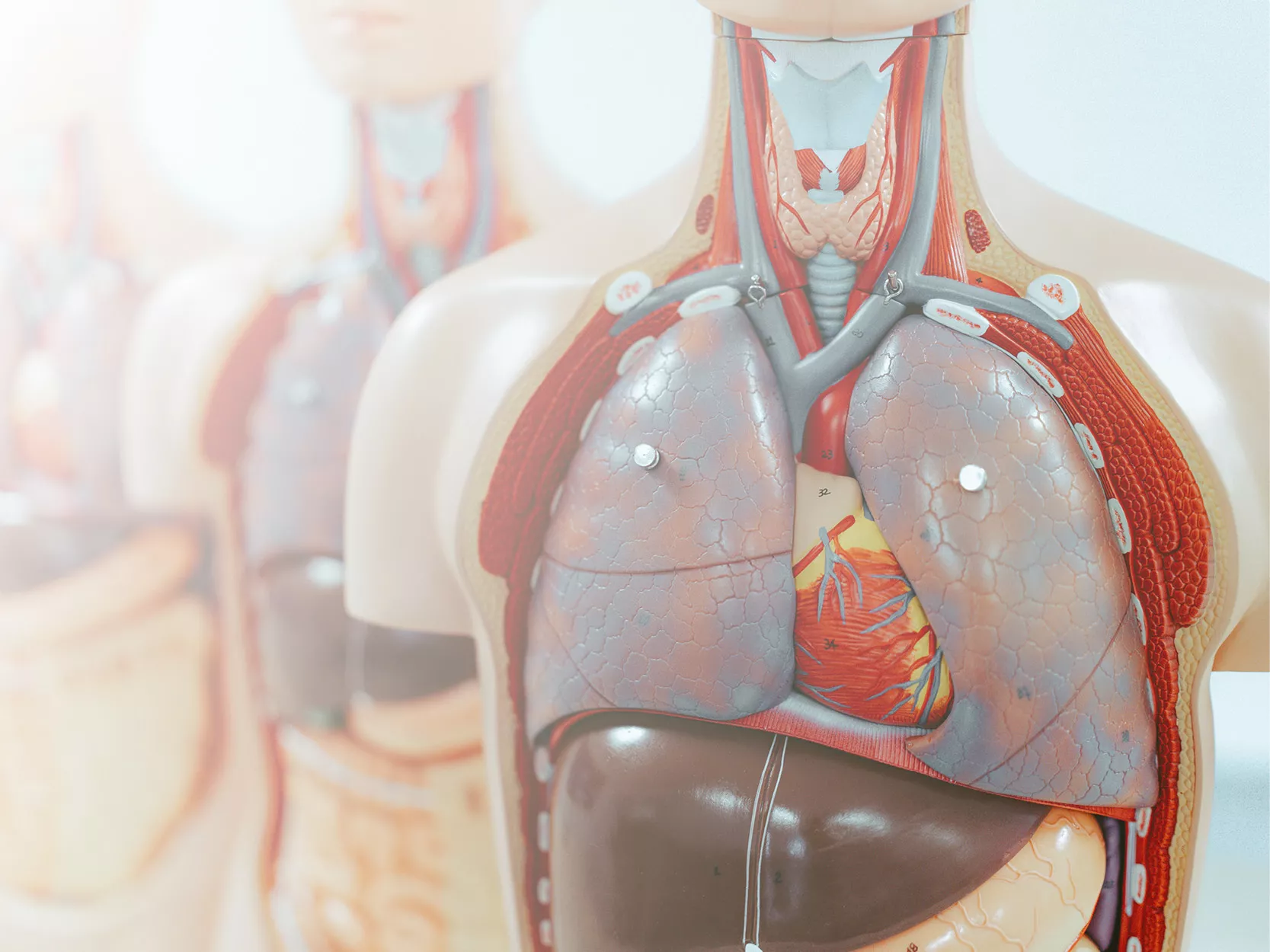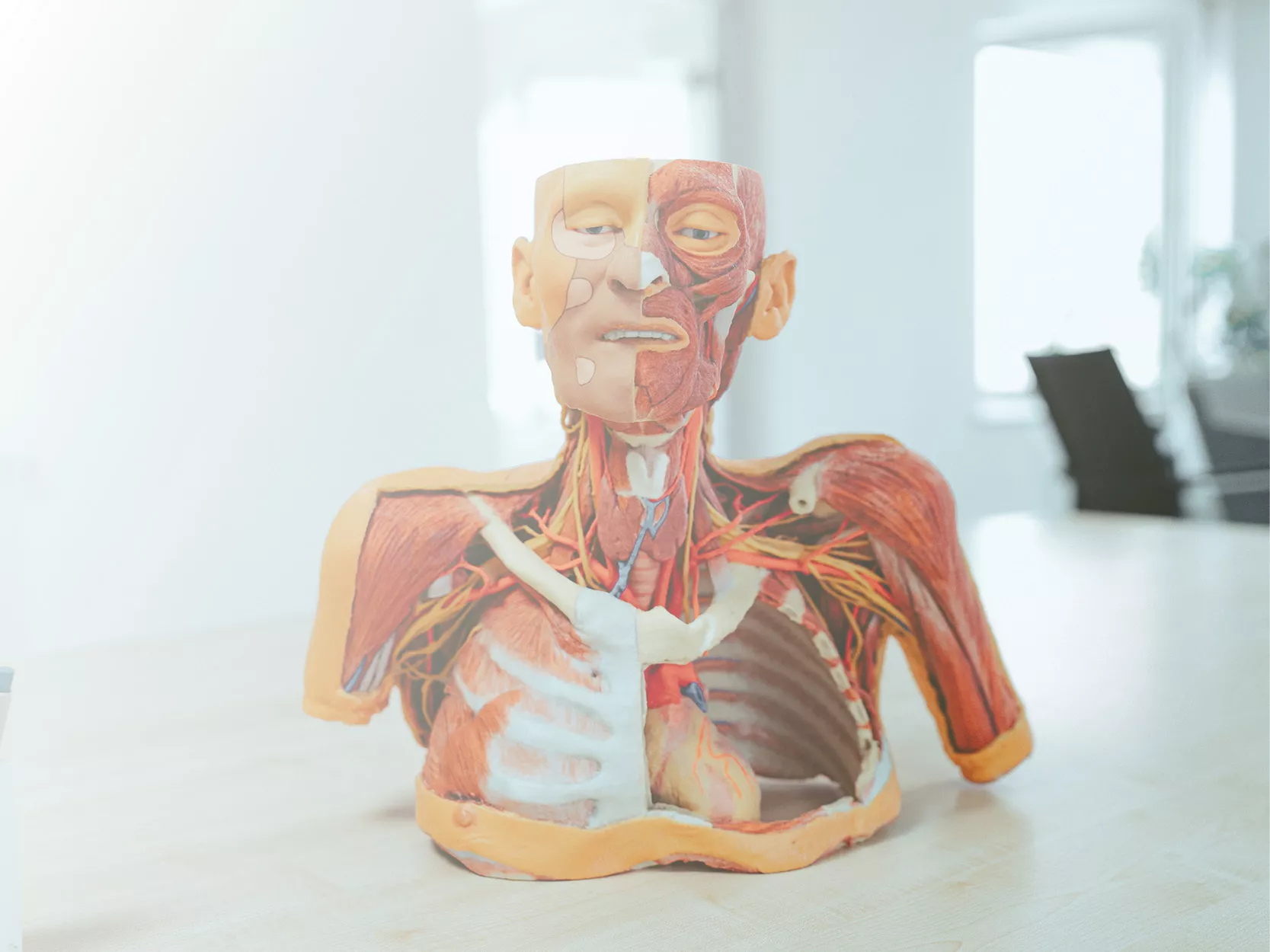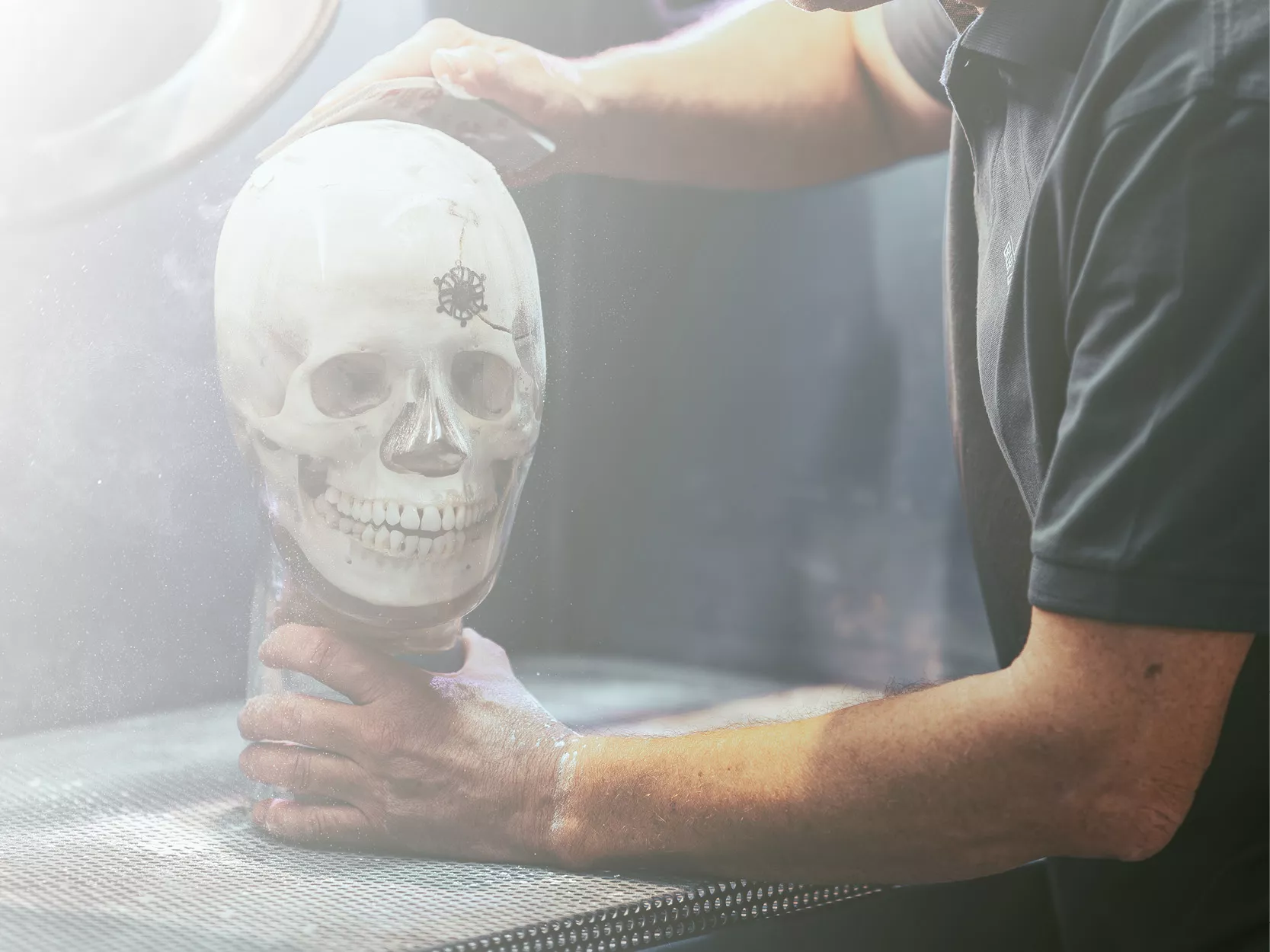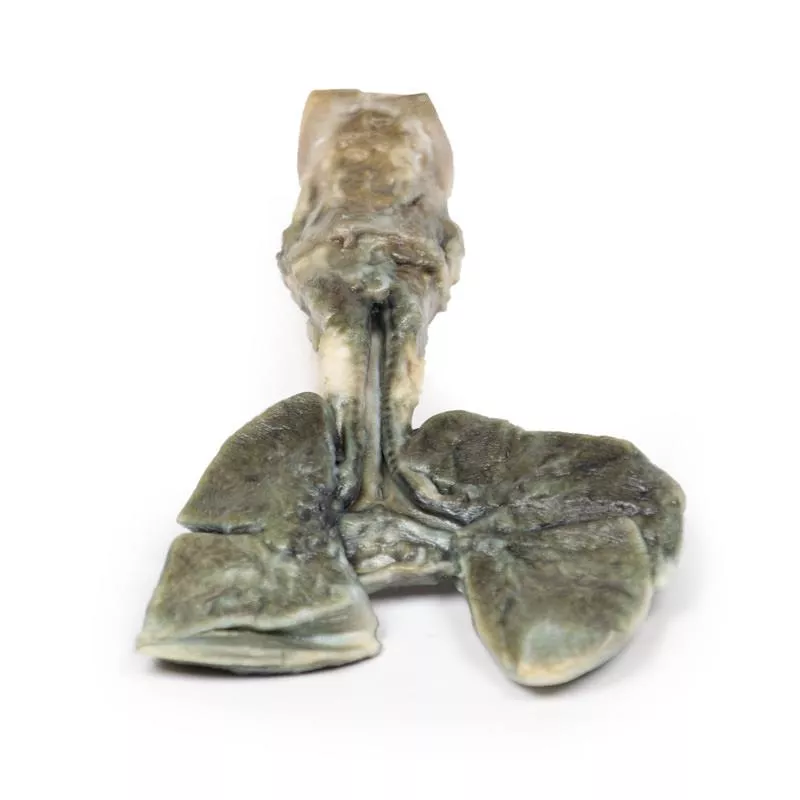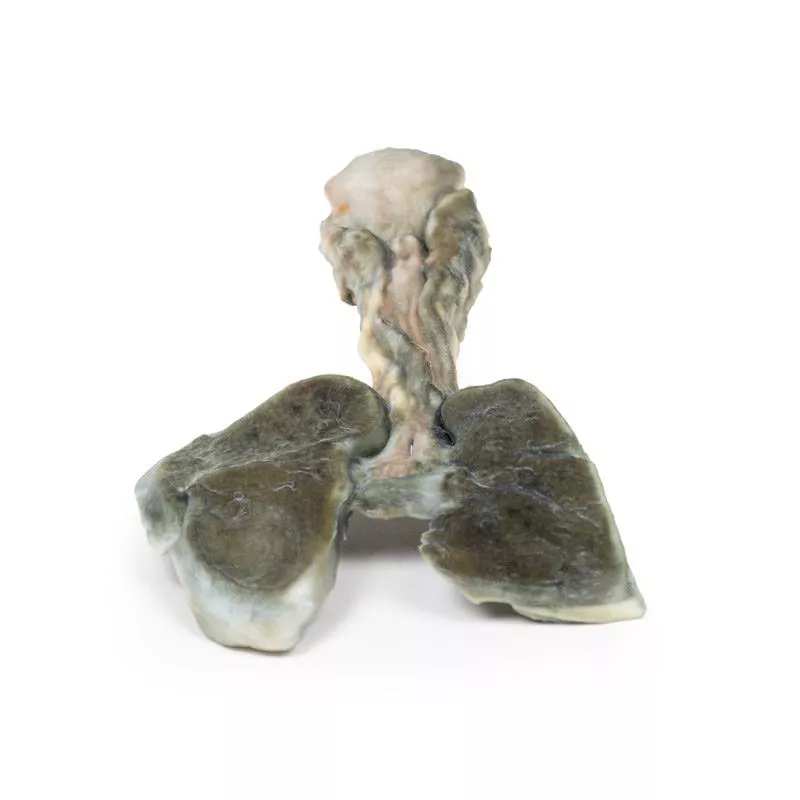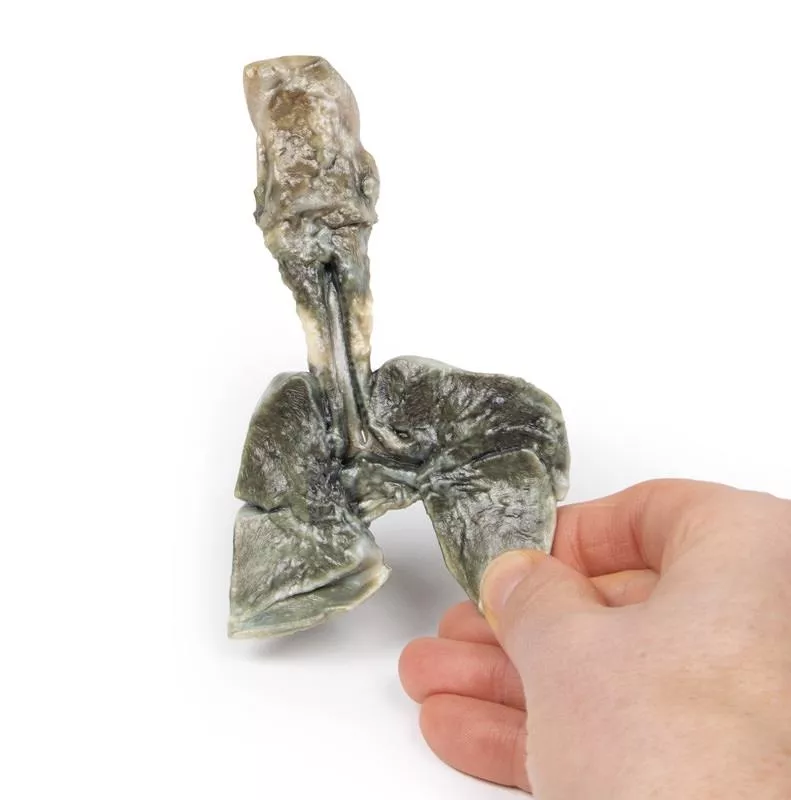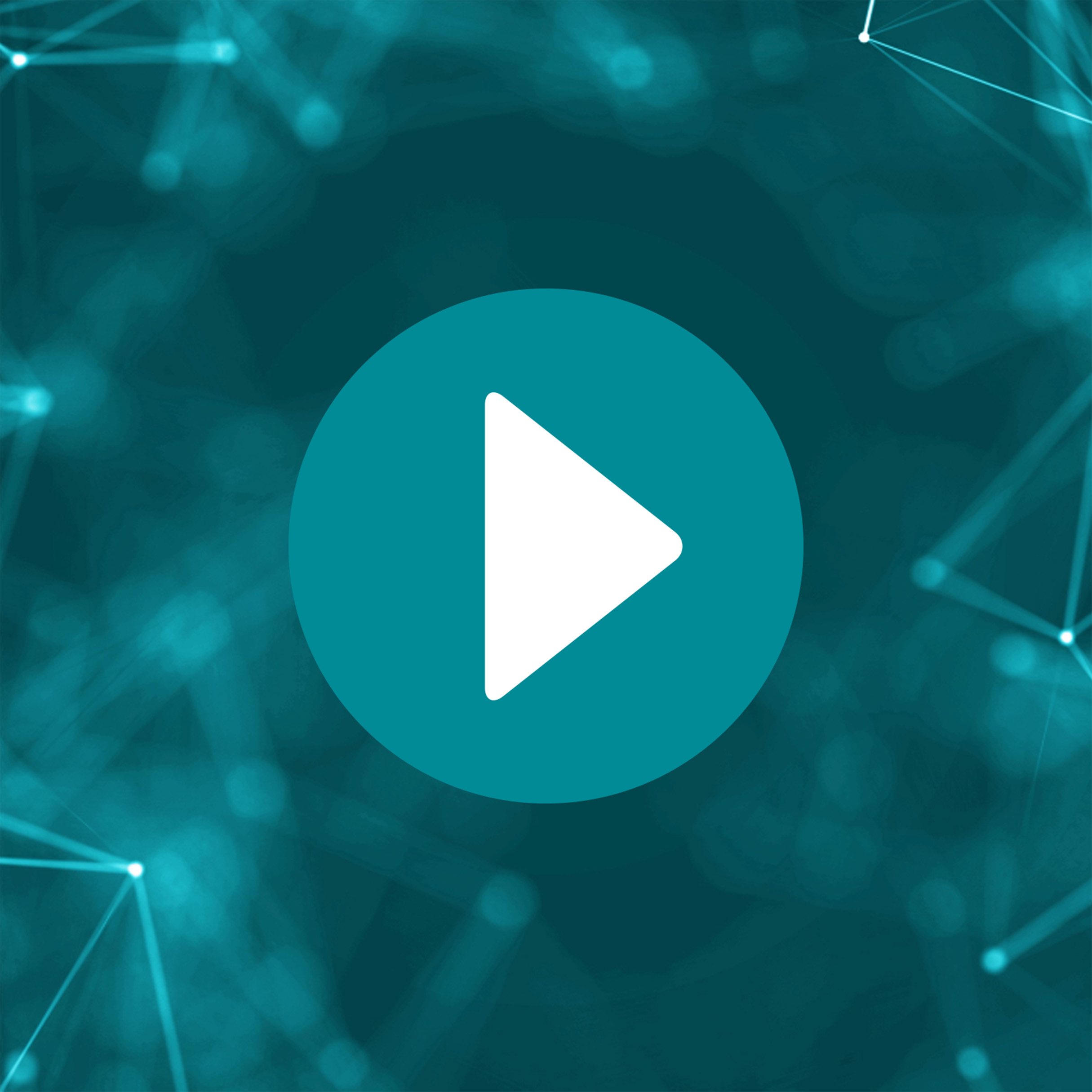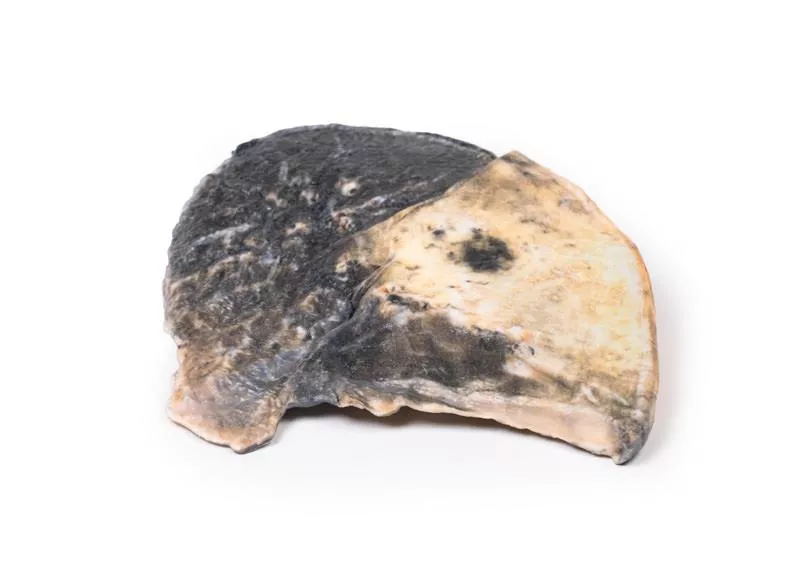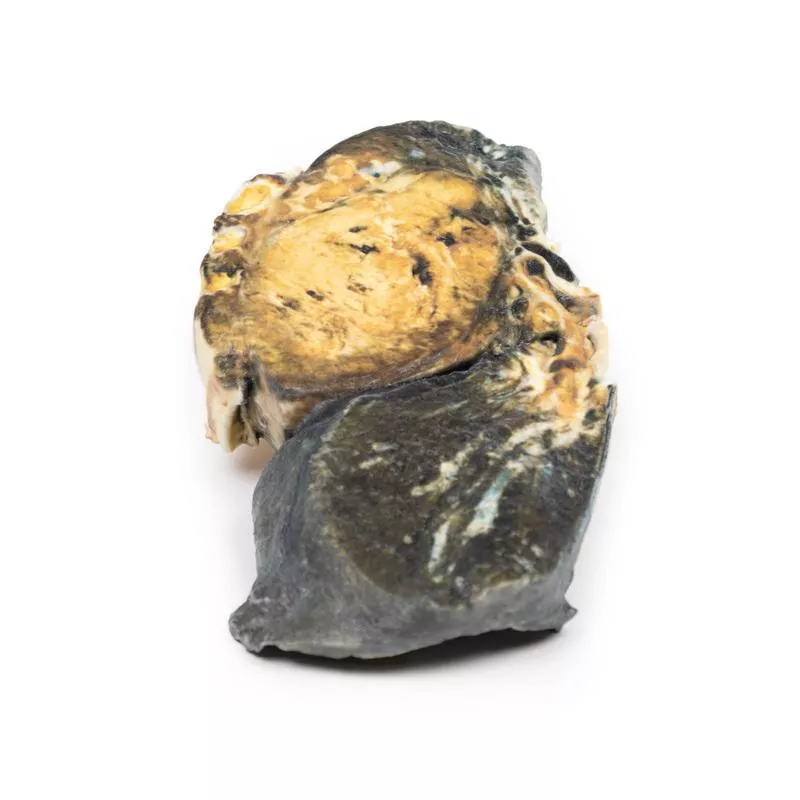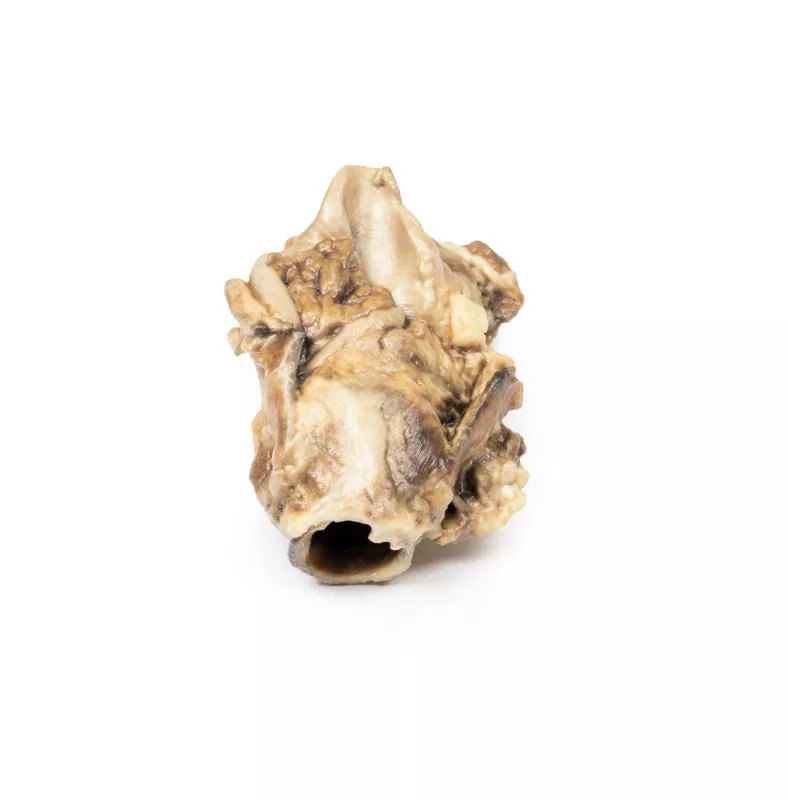Product information "Tracheoesophageal Fistula and Oesophagus Atresia"
Clinical History
A 32-year-old woman presented in preterm labor at 25 weeks and delivered a live male infant. The baby showed polydactyly, imperforate anus, excessive drooling, and a loud pan-systolic murmur. A single umbilical artery was noted. The infant developed feeding difficulties and respiratory distress, and died two days later from aspiration pneumonia.
Pathology
This specimen includes the tongue, larynx, trachea, bronchi, both lungs, and oesophagus. A Type C tracheoesophageal fistula is visible just above the tracheal bifurcation, connecting the distal oesophagus to the trachea. Oesophageal atresia may be present but is not clearly visible.
Further Information
Tracheoesophageal fistula (TEF) occurs in about 1 in 4000 live births. Type C – oesophageal atresia with distal TEF – is the most common (86%). TEF results from faulty foregut separation during development and is associated with syndromes such as VACTERL and CHARGE. Prenatally, signs include polyhydramnios and an absent stomach bubble. Postnatally, symptoms include drooling, choking, feeding difficulties, and respiratory distress. Diagnosis is confirmed by failed nasogastric tube placement and imaging. Surgical repair is the main treatment. Prognosis is good unless associated with other major anomalies or prematurity.
A 32-year-old woman presented in preterm labor at 25 weeks and delivered a live male infant. The baby showed polydactyly, imperforate anus, excessive drooling, and a loud pan-systolic murmur. A single umbilical artery was noted. The infant developed feeding difficulties and respiratory distress, and died two days later from aspiration pneumonia.
Pathology
This specimen includes the tongue, larynx, trachea, bronchi, both lungs, and oesophagus. A Type C tracheoesophageal fistula is visible just above the tracheal bifurcation, connecting the distal oesophagus to the trachea. Oesophageal atresia may be present but is not clearly visible.
Further Information
Tracheoesophageal fistula (TEF) occurs in about 1 in 4000 live births. Type C – oesophageal atresia with distal TEF – is the most common (86%). TEF results from faulty foregut separation during development and is associated with syndromes such as VACTERL and CHARGE. Prenatally, signs include polyhydramnios and an absent stomach bubble. Postnatally, symptoms include drooling, choking, feeding difficulties, and respiratory distress. Diagnosis is confirmed by failed nasogastric tube placement and imaging. Surgical repair is the main treatment. Prognosis is good unless associated with other major anomalies or prematurity.
Erler-Zimmer
Erler-Zimmer GmbH & Co.KG
Hauptstrasse 27
77886 Lauf
Germany
info@erler-zimmer.de
Achtung! Medizinisches Ausbildungsmaterial, kein Spielzeug. Nicht geeignet für Personen unter 14 Jahren.
Attention! Medical training material, not a toy. Not suitable for persons under 14 years of age.





